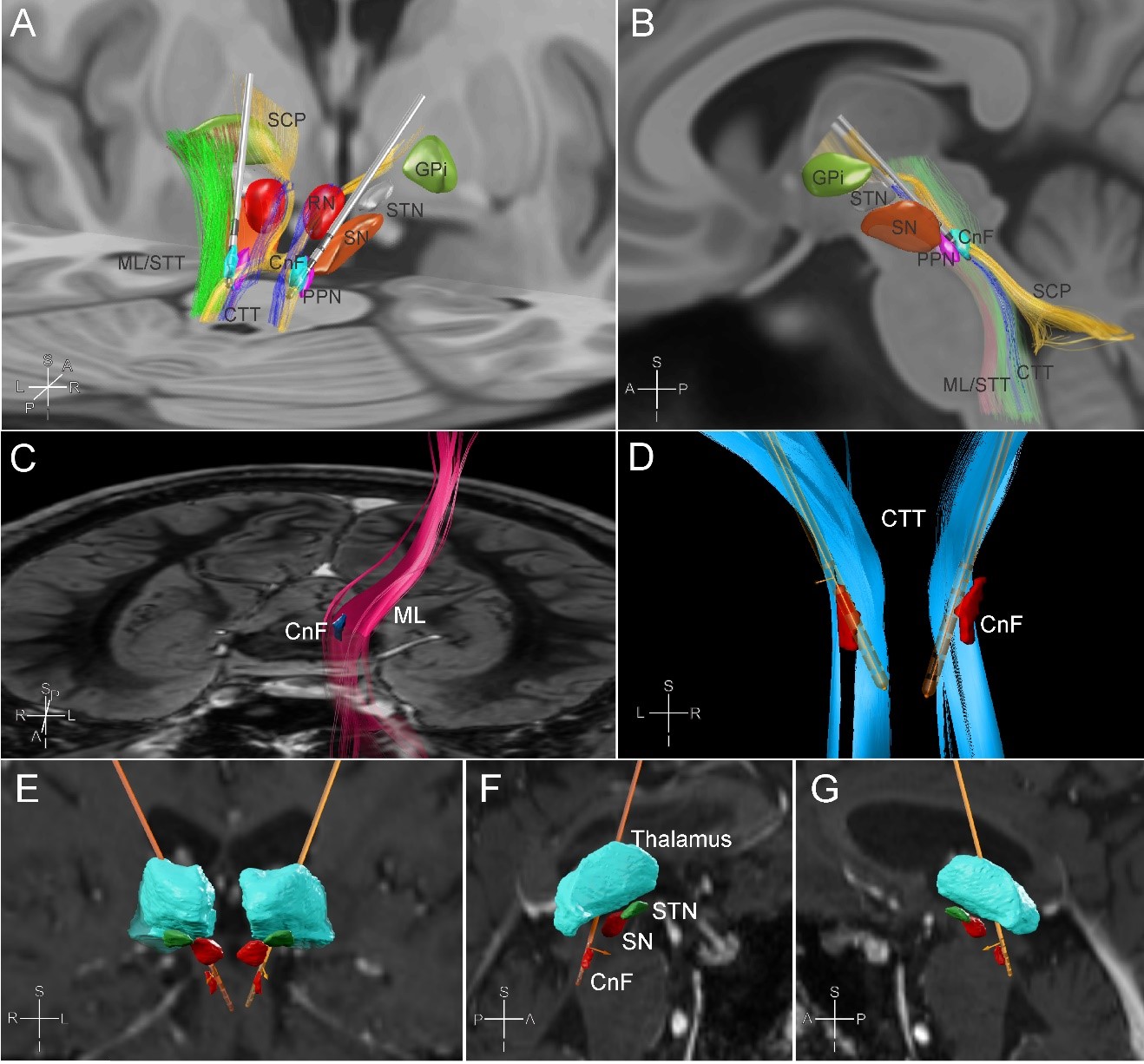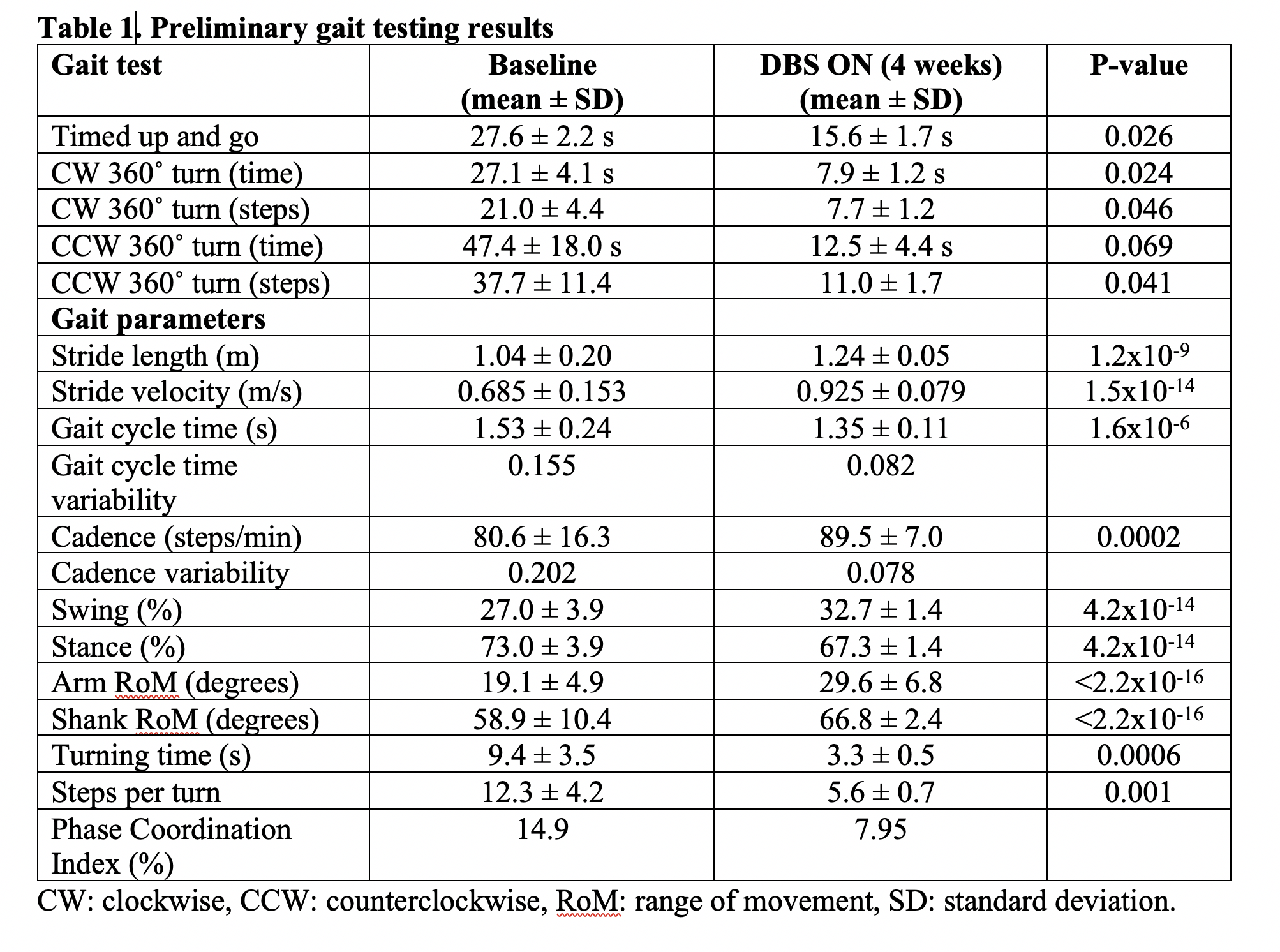Category: Parkinson’s Disease: Clinical Trials
Objective: Here we report a first in human targeting of Cuneiform Nucleus (CnF) using MR tractography, observation of intraoperative stimulation patterns and stimulation precision benefits of directional DBS electrodes.
Background: Freezing of gait (FOG) in of Parkinson’s Disease (PD) is notoriously difficult to treat and frequently does not improve after levodopa or DBS. The CnF, located just posterior to the PPN, has been proposed as a possible target to improve gait based on converging evidence including optogenetic studies in animals.
Method: As part of an open-label Phase 1 study, one PD patient with predominantly axial symptoms and severe FOG refractory to levodopa therapy was implanted with directional DBS electrodes targeting the CnF bilaterally using targets derived from DTI tractography. Intraoperative stimulation and microelectrode recordings were performed. Gait was assessed in OFF and ON conditions at 4 weeks post operatively, during straight walking and 360 degrees turning. Stride length, velocity, and gait variability were calculated using inertial measurement unit sensors.
Results: Post-operative imaging revealed accurate targeting of both leads to the designated targets (fig 1). Intraoperative stimulation in the awake patient evoked EMG micro-oscillations in limb muscles time-locked to stimulation, similar to observations with CnF DBS in animal models. Oscillopsia was the primary off target effect evoked at higher currents, especially when directed posteriorly and laterally. After 4 weeks of bilateral stimulation, Timed-up-and-Go (TUG) , 360 degree turning and gait parameters improved when compared with baseline. The TUG improved from 27.6+/- sec at base line to 15.6+/- 1.7 sec (p=0.026-T-test). 360 degree turning improved from 47.4+/-18 sec to 12. 5+/-4.4 sec (p=0.069). Stride length, stride velocity and gait variability were improved as well (table 1).
Conclusion: Cuneiform nucleus DBS may be useful for patients with refractory FOG. At 4 weeks a significant improvement in gait parameters was seen. DTI-based targeting facilitates individualized selection of the CnF target for stimulation. Intraoperative stimulation revealed EMG micro-oscillations similar to those observed with CnF DBS in animal models. Directional DBS was effective at minimizing off-target effects of stimulation in this region.
To cite this abstract in AMA style:
C. Luca, S. Chang, I. Cajigas, J. Guest, I. Haq, B. Noga, J. Jagid. Cuneiform Nucleus Deep Brain Stimulation for Freezing of Gait in Parkinson’s disease. Initial clinical report. [abstract]. Mov Disord. 2021; 36 (suppl 1). https://www.mdsabstracts.org/abstract/cuneiform-nucleus-deep-brain-stimulation-for-freezing-of-gait-in-parkinsons-disease-initial-clinical-report/. Accessed December 29, 2025.« Back to MDS Virtual Congress 2021
MDS Abstracts - https://www.mdsabstracts.org/abstract/cuneiform-nucleus-deep-brain-stimulation-for-freezing-of-gait-in-parkinsons-disease-initial-clinical-report/


